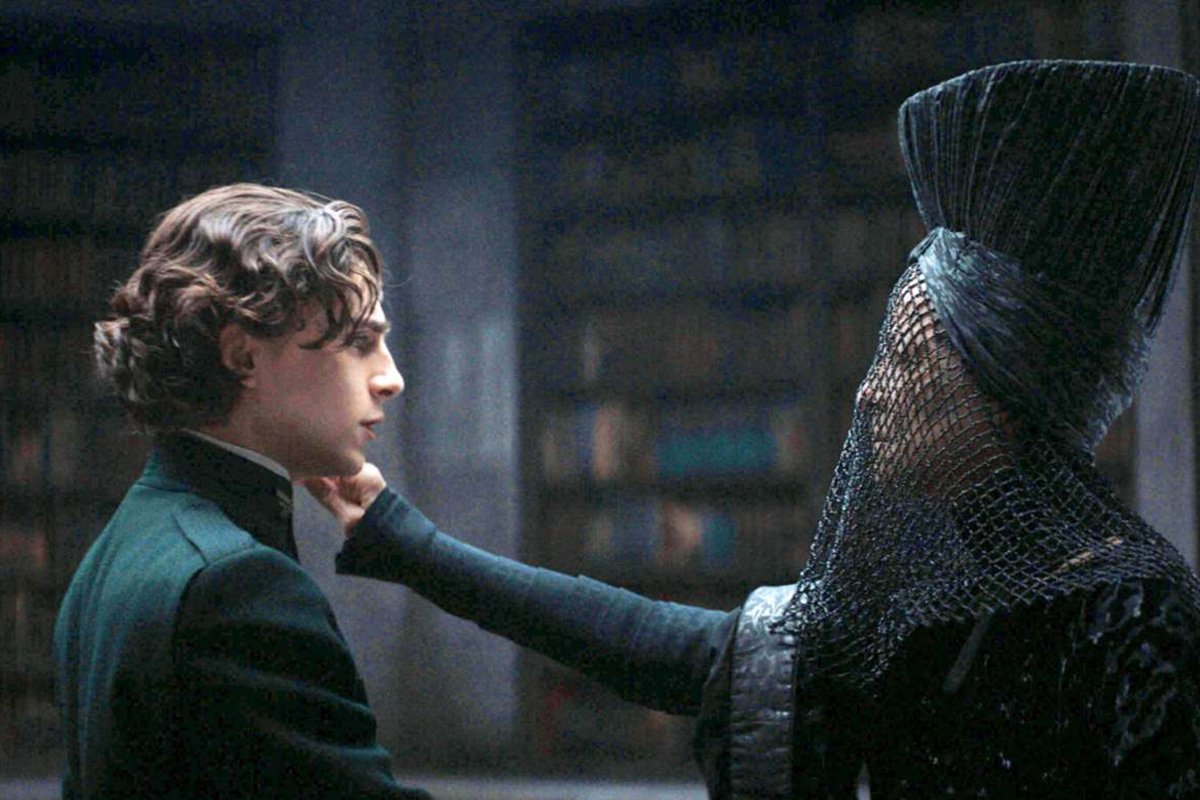Timothée Chalamet's Dune character Paul Atreides is many things; he is the heir to one of the most important dynasties in the solar system, a teenager with some serious combat skills and the possessor of some of the best hair in the galaxy.
Most importantly for the story of the movie (streaming now on HBO Max), he may also be a messiah-like chosen one described by two different prophecies. Across the first movie, there is much talk among the witch-like Bene Gesserit over whether Paul is the Kwisatz Haderach, a mythical figure the group have been waiting for for centuries.
Similarly, the cave-dwelling Fremen on the planet Arrakis think Paul might be another legendary figure called the Lisan al Gaib.
Despite there being a lot (so, so much) exposition in Dune, exactly what these two terms mean (and what they mean for Dune Part Two) is not explained in the movie.
Luckily, the Frank Herbert novel the movie is based on features explanations of both terms and what they mean for Paul.
**WARNING: The following contains spoilers for both the movie and book of Dune**
What Kwisatz Haderach means in Dune
The phrase is in one of the book's numerous fictional languages, Chakobsa, as spoken by some Fremen and the Bene Gesserit. Literally translated, it means "shortening of the way."
Using the drug harvested on Arrakis called spice, the Bene Gesserit were able to tap into what is called genetic memory, memories of their ancestors hidden in their DNA. The drug also gave them a limited amount of prescient power to see into the near future.
The problem that the group ran into is that it was only made up of women—or, more specifically, people with only two X chromosomes. In the world of the book, this meant they could only tap into the genetic memory hidden within the X chromosome and although they could tap into all of their female genetic memory, they could only access the X chromosome genetic memory of their male ancestors. The Y chromosome memories remained unavailable to them.
The hunt for the ability to access the Y chromosome genetic memory is arguably what turned the Bene Gesserit into the shady organization they are in Dune. They begin a secret selective breeding process to try and create the Kwisatz Haderach, a male with the powers of the Bene Gesserit that would allow them to access the Y chromosome genetic memory.

This process is supposed to be controlled by the leaders of the Bene Gesserit like the Reverend Mother (played by Charlotte Rampling), but Lady Jessica Atreides (Rebecca Ferguson) bends the rules of the group by teaching Paul some of the techniques of the Bene Gesserit, like the special voice that makes other people follow one's commands without question.
In the movie Dune, this explains why the Reverend Mother is so interested in Paul's dreams, and why she makes him take the test with the pain box. If Paul is having dreams about the future that end up coming true, then he may have inherited the prescient powers that the prophecy says the Kwisatz Haderach has. She then tests him basically to see if he is worthy of being the only male with access to the secrets of the Bene Gesserit.
What is the Lisan al Gaib?
The Fremen, meanwhile, have their own legends, one of which is "lisan al gaib." In Dune, this is a Fremen world, but like much of the race's language it derives from Arabic.
"Lisan" is "لسان," meaning "tongue," and "al gaib" is "الغيب," or "unseen." Transliterated as "Lisan al-Ghayb," in real life the term was an honorific given to the legendary Persian poet Hafez after he died in the 14th century. It is often translated as "tongue of the unseen realms."

The Fremen's use of the word keeps some of this meaning. The terms is used to describe a prophet from another planet (an "unseen realm") who is prophesized to bring water to the dessert planet of Arrakis.
At the end of Dune, when Paul joins the Fremen, much of the tension is between those who believe Paul is the Lisan al Gaib and those who think it is only a legend. Among those sceptical about Paul is Stilgar (Javier Bardem), the leader of the tribe of Fremen Paul meets at the end of Part One.
Lisan al Gaib is just one name that the Fremen give Paul. A crucial term that they use for him later (and is sure to be a crucial term in Part Two) is Maud'Dib. In Arabic, it means "teacher" ("مؤدب"). In Dune, it is the Fremen name Paul chooses for himself.
This destiny is hinted at in the first movie, though those not familiar with the book probably missed the reference. Among the Fremen, Maud'Dib is also the name of a kind of desert mouse—the dessert mouse that gets its own scene in the movie.
Dune is available in movie theaters and on HBO Max now.
Uncommon Knowledge
Newsweek is committed to challenging conventional wisdom and finding connections in the search for common ground.
Newsweek is committed to challenging conventional wisdom and finding connections in the search for common ground.
About the writer
To read how Newsweek uses AI as a newsroom tool, Click here.








